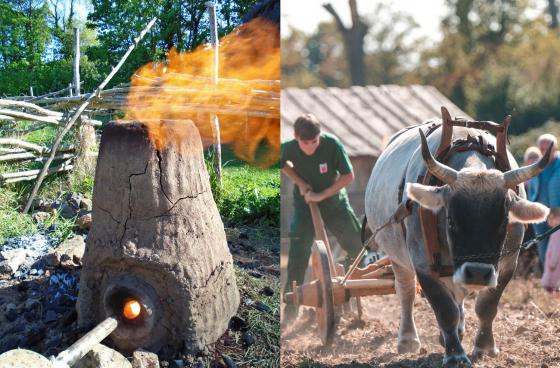
In the first ever funding by EXARC, two projects were selected to benefit from EXARC and its network. UCD Dublin (IE) and Lauresham open-air Laboratory (DE) will work with Early Medieval ploughing implements and their detailed experimental archaeological (re)construction, use, testing and recording. This will be a typical case where the museum benefits from the university and vice versa: Lauresham for example has traction animals, while UCD has research labs.
The Lauresham Laboratory for Experimental Archaeology (Germany) at the UNESCO World Heritage Site Lorsch Abbey, and the UCD Centre for Experimental Archaeology and Material Culture (CEAMC, University College Dublin, Ireland) are two complementary institutions: the first a high-quality Archaeological Open Air Museum (AOAM), dedicated to communicating daily life and work at an early medieval monastic manor associated with Lorsch Abbey, while conducting scientific research on agricultural livestock management and technologies: whereas UCD CEAMC is a university-based experimental archaeological research and teaching facility, with some public engagement and outreach activities, with particular strengths in early medieval archaeology.
Project description
For the EXARC Twinning project the two project partners propose to join forces on the question of Early Medieval ploughing implements and their detailed experimental archaeological (re)construction, use, testing and recording. Plough technologies and their development are a key aspect of the character and productivity of early agriculture, and particularly from the 7th/8th century onwards when cereal production intensified across Europe to support growing populations. Ploughs were a vital means of preparing soils for growing cereals such as wheat, barley and oats, which were both a food staple for a growing rural and urban population and a means of acquiring surplus goods for markets and exchange. However, there is still much that is not fully understood about their effectiveness and typological development. There is quite a lot of archaeological evidence for 8th/9th century plough shares (the arrow-or sock-shaped iron object that lifted and sometimes inverted the soil) and iron coulters (the heavy iron blade that hung down from the wooden plough and cut the sod) from Ireland, but these iron implements are almost completely missing for the south-western part for Germany where the Lauresham Laboratory is situated.
